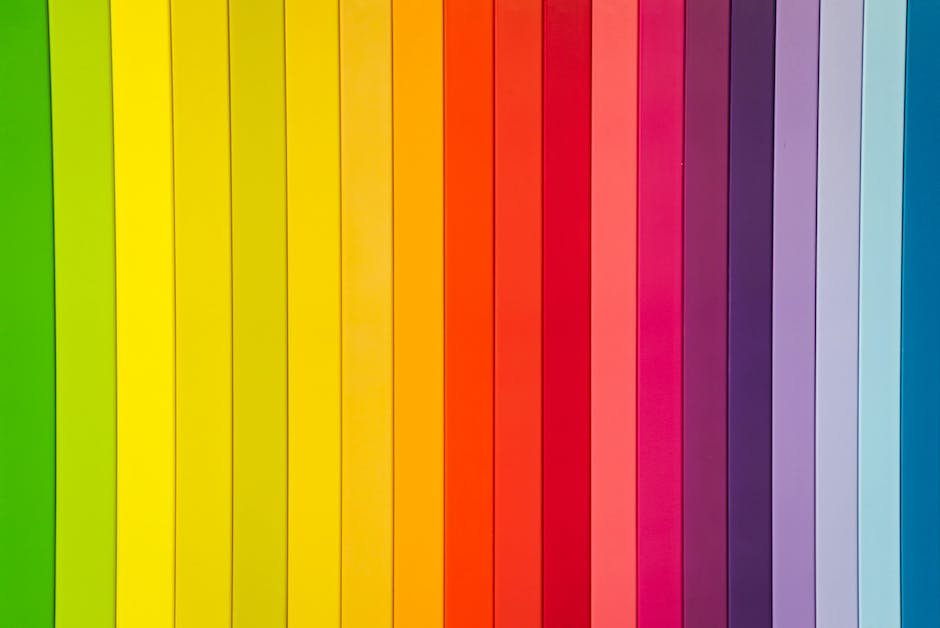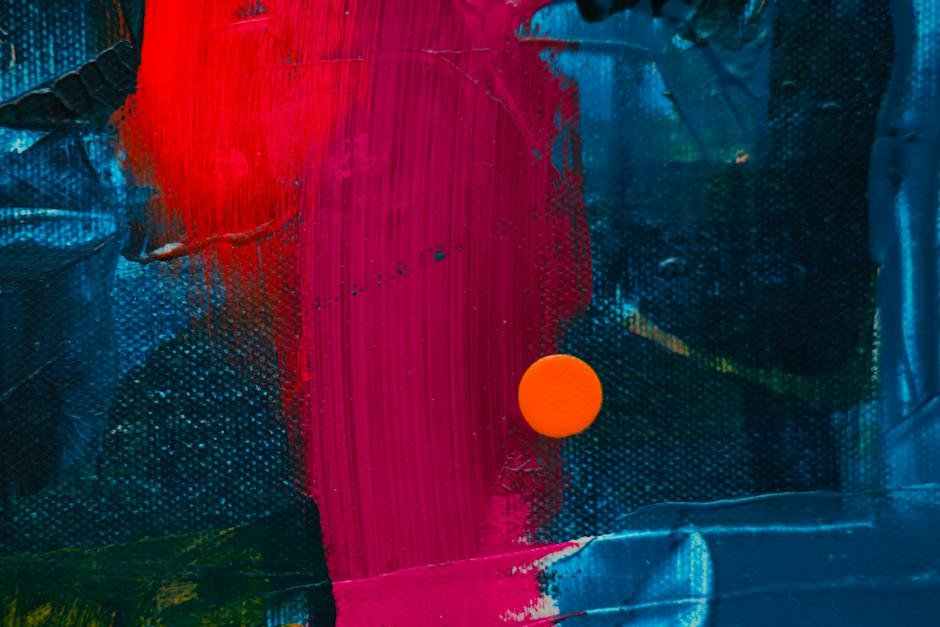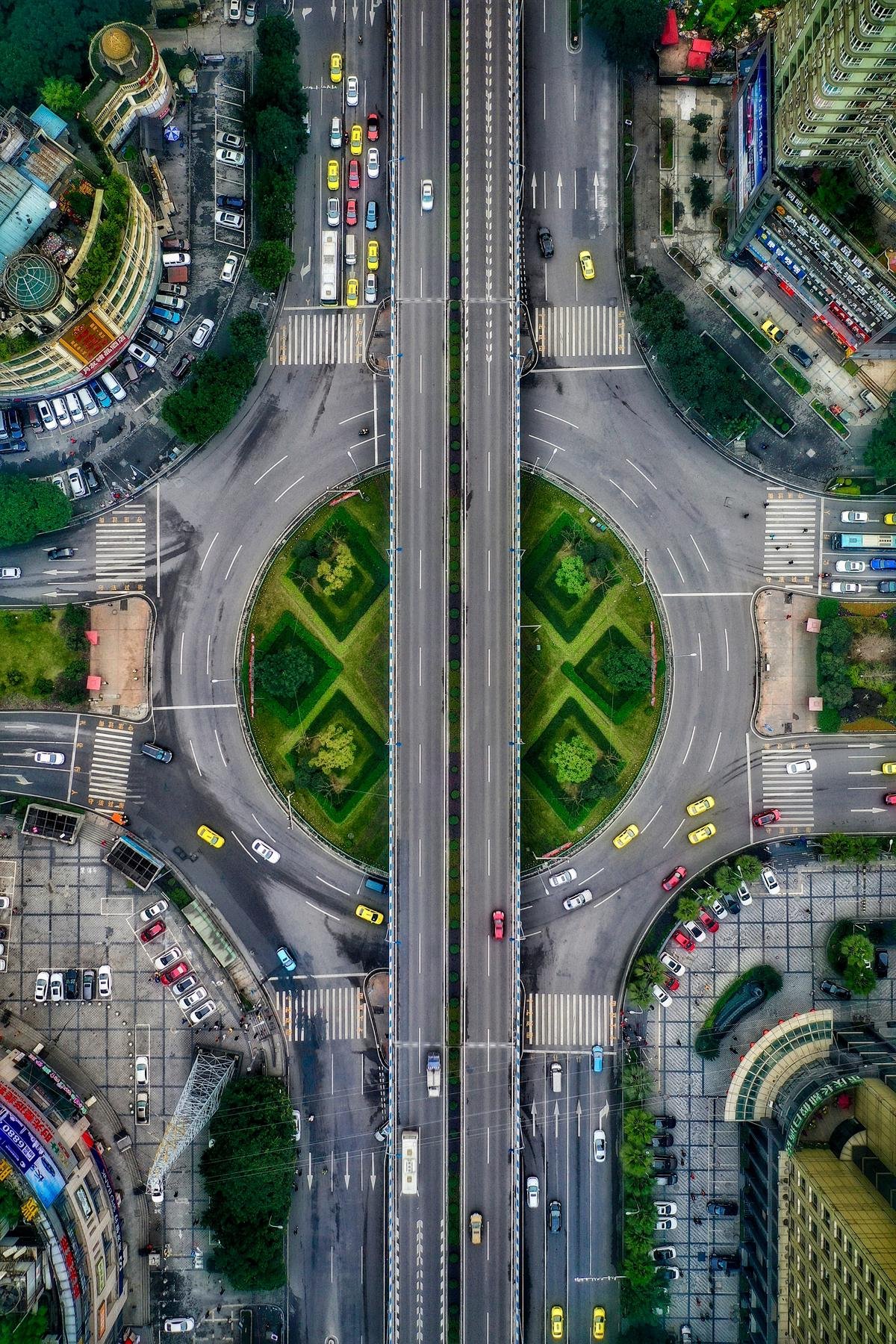Algorithmic artistry stands at the confluence of mathematics, technology, and aesthetics, providing a fascinating lens through which we can explore the harmonious dance of numbers turned into beauty. As we embark on a journey through the Theoretical Foundations of Algorithmic Art, we cast our gaze upon the deep mathematical and computational theories that underpin this modern art form. Understanding algorithmic development and the interplay of randomness and determinism grants us insight into the emergence of patterns and the allure of fractal beauty, carving a space where precision is woven seamlessly with artistic expression.
Theoretical Foundations of Algorithmic Art
Exploring the Mathematical Foundations of Algorithmic Artistry
Algorithmic art, an intriguing intersection of mathematics and creativity, is an emerging discipline within the broader realm of computational aesthetics. This field harnesses mathematical principles to generate art, often with spectacular and unforeseen results, allowing for the automated creation of visuals that might otherwise be impossible or impractical for human artists. The mathematical tenets that underpin algorithmic art are crucial to understanding both how and why such artworks are created.
Fundamentally, algorithmic art is predicated on algorithms: well-defined, step-by-step computational procedures which, when executed, produce an outcome from a given input. These algorithms are imbued with mathematical operations and constructs that transform basic data into intricate visual compositions.
One of the cardinal components of algorithmic art is geometry, the study of shapes and spatial properties. Artists exploit geometric transformations – including translation, rotation, scaling, and reflection – to manipulate shapes within a digital canvas, crafting repeating patterns, tessellations, and fractals, each with its distinctive appeal.
Fractals, in particular, are a quintessential example of the marriage between mathematics and art. Characterized by self-similarity across different scales, fractals are created using recursive algorithms – procedures that call themselves repeatedly. Each iteration (or repetition) applies a transformation that echoes the structure of the whole, creating complex, often stunning patterns. The Mandelbrot set and the Julia set are archetypical fractal structures that have captivated both mathematicians and artists for their mesmerizing beauty.
Randomness and probability also play pivotal roles in algorithmic art. Random number generators seed stochastic elements into algorithms, breaking away from the strict determinism of mathematical operations to introduce an element of unpredictability in the art. This unpredictability can create variations that mimic the organic irregularity found in nature, giving rise to naturalistic textures and forms.
In addition, mathematical optimization techniques are employed to refine aesthetics and balance visual compositions. Optimization algorithms can adjust color schemes, line densities, and other aspects of the artwork to achieve a harmony pleasing to the observer’s eye. These algorithms often mimic natural selection or other processes from nature, iterating toward a state of perceived perfection.
Algorithmic art thrives upon the scaffolding provided by mathematical logic, yet it is seasoned with a degree of creative spontaneity that evades a purely formulaic character. This symbiosis of mathematics and creative expression not only yields new forms of art but also extends the human capacity for visualizing the abstract language of numbers and equations.
Through its foundation in mathematical concepts, algorithmic art transforms the abstract and the theoretical into the tangible and evocative. It underscores the versatility of mathematics as not solely an austere field of study but also an enabler of human creativity, as it continues to evolve and redefine the boundaries between deterministic methods and artistic discovery.

Tools and Technologies in Algorithmic Art Generation
Algorithmic art, a fascinating synthesis of computation and creativity, owes its existence to a host of software and programming environments that provide the backbone for its creation. Software such as Processing, developed by Casey Reas and Ben Fry, is designed specifically with the visual arts community in mind, allowing the creation of intricate digital pieces with relative ease.
Processing, an open-source graphical library and integrated development environment (IDE), uses the Java programming language at its core. Its accessibility and flexibility make it a staple for artists delving into the algorithmic sphere. Users are provided with a straightforward syntax, minimizing the barrier to entry for those less familiar with coding. Additionally, the community around Processing is robust, offering an expansive repository of libraries and tutorials that encourage experimentation and knowledge sharing among practitioners.
Another pivotal software is openFrameworks, a C++ toolkit for creative coding, which allows for more complex and performance-intensive artworks. Its versatility is appreciated in both the artistic and academic realms, bridging the gap between computational efficiency and aesthetic exploration. Unlike Processing, openFrameworks may require a more profound understanding of coding principles; however, its capacity to handle more elaborate visual and interactive tasks makes it an invaluable asset to the algorithmic artist’s toolkit.
Python, a programming language renowned for its readable syntax and broad applicability, is central to the creation of algorithmic art. Specifically, Python libraries such as Turtle Graphics for educational purposes or the more advanced Pycairo for creating 2D visuals, empower artists and researchers to draft algorithmic compositions with relative simplicity. The language’s succinct syntax allows for a greater focus on artistic concepts rather than the intricacies of code, fostering an environment where mathematical beauty can flourish unimpeded.
Furthermore, the JavaScript language, particularly when combined with the HTML5 canvas element, enables artists to render their algorithmic designs directly in web browsers. This democratizes the viewing experience, allowing access to interactive and dynamic artworks without the need for specialized software installations.
MAX/MSP, while not a programming language in the conventional sense, is a visual programming environment widely used within the audio-visual artistic community. Its node-based interface provides a platform for the construction of complex audio algorithms which can, in turn, affect or drive visual elements in algorithmic art installations.
In the realm of three-dimensional algorithmic art and modeling, languages and software such as C# within Unity or the node-based visual programming of Blender’s Geometry Nodes provide the tools necessary to create immersive experiences. Unity, a game development platform, has found a particular niche in algorithmic art for virtual and augmented realities, where the experience of the artwork is as much about interaction as it is about observation. Blender, being free and open-source, has become a vessel through which intricate three-dimensional shapes and movements are conceived, often guided by algorithmic principles such as L-systems or particle simulations.
Each software and programming language mentioned serves a distinct purpose within the complex ecosystem of algorithmic art, presenting a unique set of tools, functionalities, and communities. Together, they create a technological tapestry that enables the translation of algorithmic principles into evocative visual narratives, compelling both artists and observers to ponder the profound connections that exist among mathematics, technology, and human expression.
IMAGE:

Evolution of Algorithmic Art
As technology propels forward, the evolution of algorithmic art has not merely kept pace; it has been inextricably intertwined with every leap and bound. Embracing the vast potential of digital resources, artists and programmers have forged a symbiotic relationship that blurs the lines between science and art, creating a fertile ground for innovation and expression.
Advancements in computing power have been a crucial catalyst for this growth. Early iterations of algorithmic art were often constrained by the limited processing capabilities of the time. Now, with modern processors’ ability to handle complex calculations at lightning speeds, the canvas for algorithmic art has expanded exponentially. The increased computational throughput facilitates the processing of large data sets and the rendering of high-resolution, intricate artworks that were previously impossible.
Simultaneously, developments in machine learning and artificial intelligence have infused new dynamics into the field. AI algorithms, trained on datasets ranging from classical artwork to modern design, can now generate unique compositions. Their capacity to learn from existing aesthetics and to extrapolate new forms has enabled a generation of artworks that are both derived from human creativity and distinct in their autonomy.
The advent of sophisticated graphics processing units (GPUs) has also been transformative. GPUs handle the parallel processing of multiple operations, a capability highly beneficial for algorithmic art, which often involves numerous calculations for rendering images or simulations. This has granted artists the ability to work in real-time, creating interactive installations where the art responds to the environment or audience.
Cloud computing, though not as visible as local processing power, has significantly impacted the field. By offloading computational tasks to cloud servers, artists have access to higher processing power without the need for expensive hardware. This democratizes the creation of complex algorithmic art, enabling creators with limited resources to participate in the domain at a higher level.
Moreover, the proliferation of high-resolution displays and projection systems has altered the way algorithmic art is experienced. Ultra-high-definition screens offer viewers an unprecedented level of detail and color accuracy, permitting minute elements of algorithmic designs to be appreciated fully. Immersive projection mapping, on the other hand, turns three-dimensional surfaces into living canvases, allowing algorithmic art to escape the bounds of traditional, static displays and envelop viewers.
Lastly, the integration of the Internet of Things (IoT) devices has opened yet another avenue for algorithmic art evolution. These network-connected devices can feed real-time data into algorithmic systems, allowing for artworks that reflect and react to a constantly shifting array of inputs—from weather patterns to urban noise levels—and in turn, pose commentary on our interconnected world.
The resultant tapestry of algorithmic art weaves complex digital threads, illustrating an ever-growing field that reflects the profound connection between technological innovation and creative grandeur. Each new technological advancement beckons algorithmic art to stretch into uncharted territories, promising an ever-evolving landscape of digital creativity.

Interdisciplinary Nature of Algorithmic Art
Algorithmic art intersects with various scientific and artistic disciplines through multiple avenues, prompting an interdisciplinary fusion that is reshaping the landscape of what art can be. This intersection is not simply a casual overlap but rather a synergistic amalgamation that fosters innovation and discovery across fields.
In the realm of data visualization, one of the most palpable collaborations is evident. Here, algorithmic art marries the precision of data science with the expressiveness of visual aesthetics. The visualization of complex datasets through artful representation has become an indispensable tool for scientists and researchers. The ability to convert large quantities of data into comprehensible visual systems allows for the elucidation of patterns and relationships that might otherwise remain obscured by the raw data’s opacity.
Furthermore, algorithmic art’s alliance with neuroscience unveils an extraordinary avenue of exploration into human perception. When artists employ algorithms fashioned around principles of visual processing, they can manipulate and explore how viewers interpret art. This interaction can lead to abiding insights into cognitive functions and the workings of the human brain, as our neurological feedback to algorithmically generated patterns and structures can be quantified and analyzed.
Robotics also plays a nascent role in the domain of algorithmic artistry. With robotic arms and other mechanized tools being directed via finely-tuned algorithms, the lines between digital and physical artworks blur. These robotic devices can create intricate sculptures and drawings that echo the coded directives with a precision and repetition unattainable by the human hand.
Environmental science intersects with algorithmic art using data concerning ecological systems, weather patterns, and other natural phenomena as fodder for generative art. Works produced in this intersection often seek to communicate the intricacies of our environment or to raise awareness about pressing ecological issues, translating raw environmental data into sensory experiences that resonate on an emotional level.
In the educational sphere, algorithmic art finds its utility as an unparalleled pedagogical instrument. Educators employ it to illuminate the relevance and beauty of mathematical and scientific concepts. By visualizing algorithms at work, learners can observe the tangible outcomes of abstract theories, which significantly aids in comprehension and retains engagement.
Finally, the convergence with philosophical and ethical inquiries cannot be overlooked. As artists harness algorithms that incorporate decision-making and predictive modeling, pressing questions about the nature of creativity, authorship, and the human role in art production come to the forefront. Algorithmic art begets rich discussions regarding the essence of consciousness and intelligence — whether artificial or organic.
The iterative dance between art and science continues to echo through the chambers of algorithmic art. By feeding and being fed by a plethora of scientific and artistic fields, it remains an ever-evolving tapestry, illustrative of humanity’s persistent quest for understanding and expression.

Future Directions and Ethical Considerations
Considering the profound explorations and the robust intellectual framework that has been laid out thus far, we must now delve into the future prospects of algorithmic art, and also contemplate the ethical ramifications entwined with its evolution. The discourse concerning the trajectory of algorithmic art forecasts a horizon where technology is not only a tool but becomes a collaborative partner in the creative process. The advent of quantum computing, with its potential to process inconceivably large datasets and perform computations at speeds beyond current capabilities, may offer algorithmic artists unprecedented canvases of complexity and detail.
Furthermore, the fusion of algorithmic art with augmented and virtual reality technologies is poised to redefine the sensory boundaries of the art experience. The immersion and interaction facilitated by these technologies can create multi-dimensional canvases where art is not just observed but is encountered and inhabited. We stand on the precipice of a renaissance where the line between creator, creation, and experiencer may become serendipitously blurred.
Yet, this brave new frontier is not devoid of ethical quandaries. As algorithmic art increasingly relies on artificial intelligence, questions on the originality and authorship of such art become more pressing. Who is the creator when an artwork is generated by an algorithm— the programmer, the machine, or an amalgamation of both? This dilemma challenges the very notion of artistic copyright, ownership, and the merit of algorithmic art within the traditional constructs of artistic value.
The data nourishing these algorithms also shrouds potential ethical intricacies. The provenance, privacy, and consent related to the data sources coalesce into a complex web of responsibility that the algorithmic art community must meticulously untangle. One must consider the implications of using personal or culturally sensitive data to feed the voracity of creative algorithms, as these practices could inadvertently propagate invasion of privacy or cultural appropriation.
Moreover, the deployment of algorithmic art has implications that span beyond the sphere of art itself. While the adoption of this medium can democratize art creation and appreciation, the accompanying technological requisites can also deepen socio-economic divides. As such, critiques of digital imperialism and the exclusivity of high-tech artistic tools necessitate thorough examination and conscientious discourse among practitioners and scholars alike.
In summary, the labyrinth of future prospects in algorithmic art is as intricate as it is thrilling. The ethical considerations that must accompany these advances are complex and integral to the field’s maturity. As the discipline evolves, it is incumbent upon those at the vanguard to navigate these territories with foresight, responsibility, and an unwavering commitment to the principles that underpin both the creation of art and the fabric of society it reflects and shapes.

As we look toward the horizon of algorithmic art, we are met with a panorama of possibility, innovation, and profound questions that touch the core of our relationship with creativity. The future of this field is not only an unraveling of new artistic frontiers but also a mirror reflecting the evolving ethical landscapes we navigate. Algorithmic art continues to push the boundaries, challenging our perceptions of authorship and originality while inviting us to reimagine the role of the artist in the age of technological ascendancy. It is within this evolving tapestry of code, color, and concept that the story of algorithmic artistry will continue to be written, redefining our cultural and aesthetic paradigms as it flourishes.




